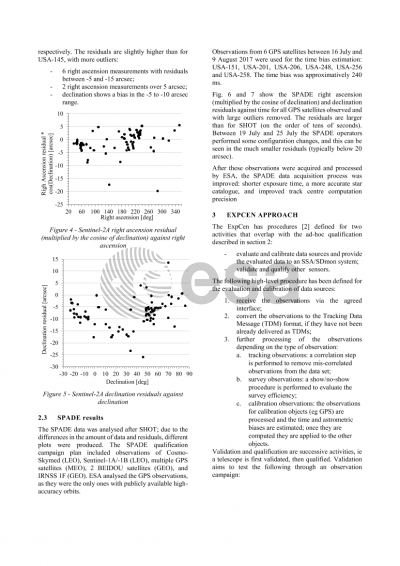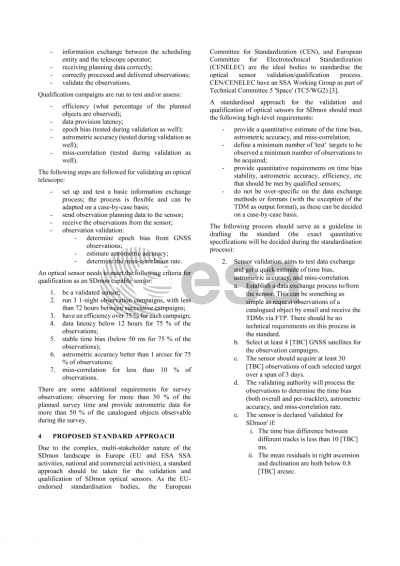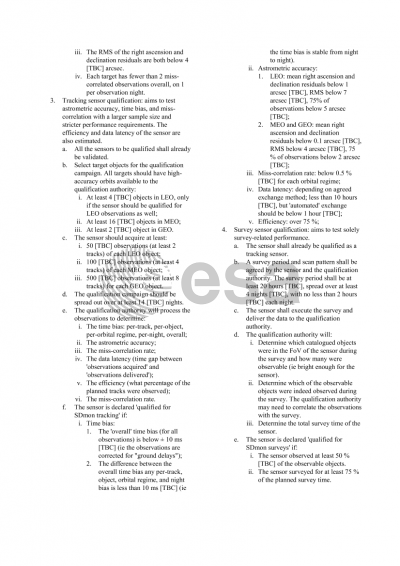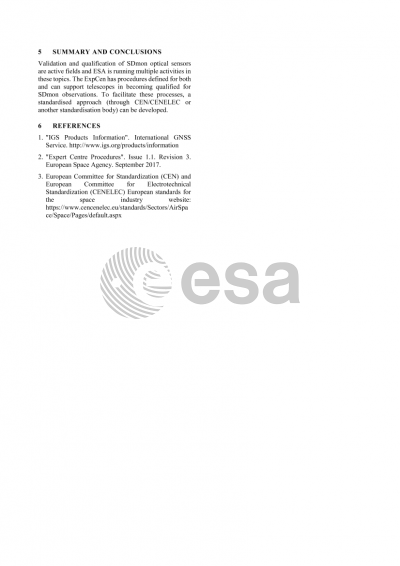Document details

Abstract
ESA's SSA programme aims to develop SST sensors and technology, and to support national as well as multi-national projects and international cooperation. The need for timely and accurate SST data is increasing, driven by the recent launches of large numbers of small satellites and the announcements of several large constellations.
There are several SST-capable optical telescopes (both already operational and planned) in Europe. SST data acquisition differs from 'traditional' astronomical observations, including much faster targets and very precise timekeeping. This paper proposes a standardised SST qualification procedure for optical telescopes.
As an example an ad-hoc qualification campaign was run with two optical telescopes (SHOT in the Czech Republic and SPADE in Italy) and the results analysed. The SST Expert Centre has its own more complex qualification procedures. A step-by-step qualification approach, to serve as the basis for a European standard, is proposed.
The approaches followed by ESA and the SST Expert Centre can serve as the basis for a European or international standard for SST telescope qualification, to be pursued under CEN/CENELEC or another body.
Preview








